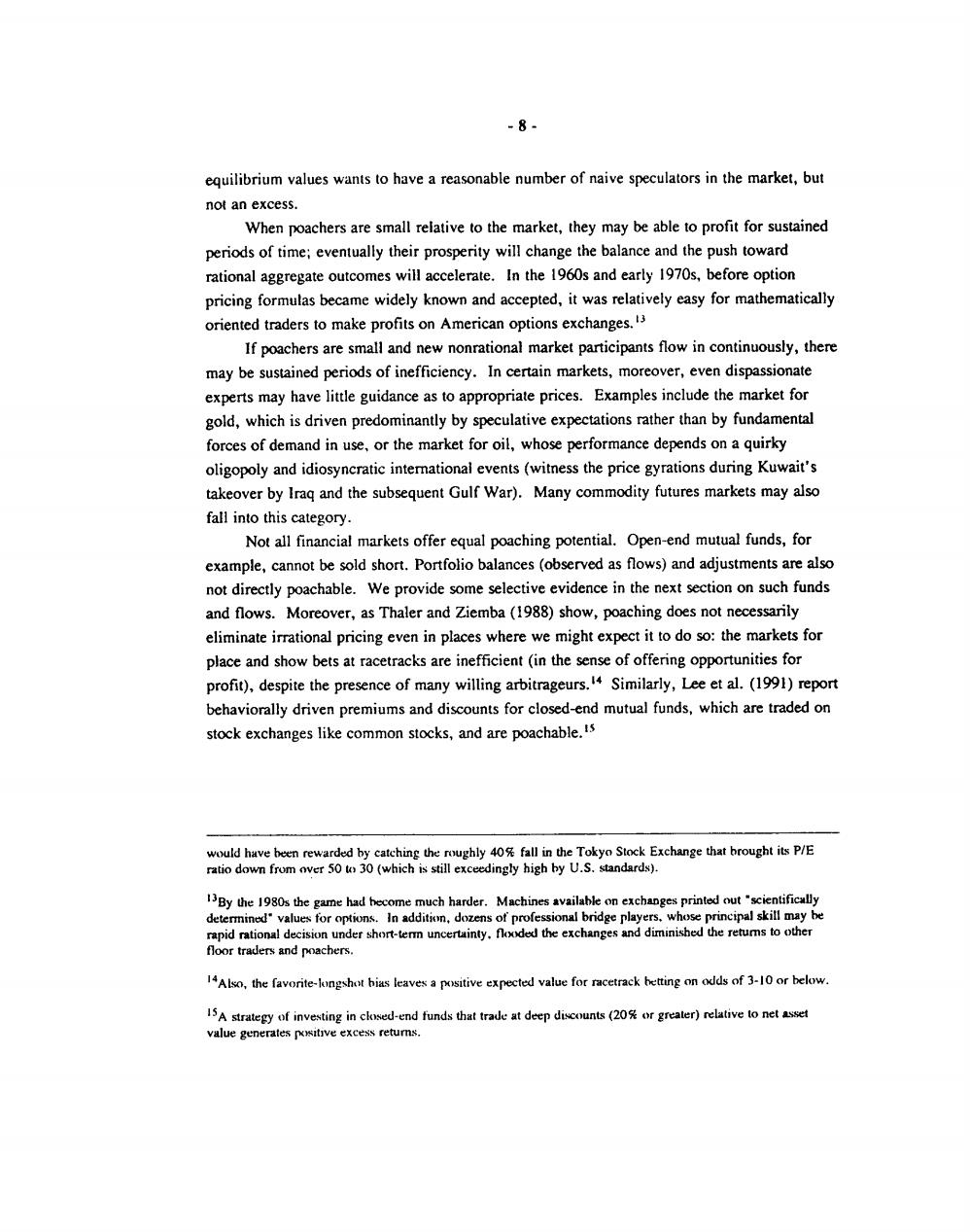正在加载图片...

-8- equilibrium values wants to have a reasonable number of naive speculators in the market,but not an excess. When poachers are small relative to the market,they may be able to profit for sustained periods of time;eventually their prosperity will change the balance and the push toward rational aggregate outcomes will accelerate.In the 1960s and early 1970s,before option pricing formulas became widely known and accepted,it was relatively easy for mathematically oriented traders to make profits on American options exchanges.3 If poachers are small and new nonrational market participants flow in continuously,there may be sustained periods of inefficiency.In certain markets,moreover,even dispassionate experts may have little guidance as to appropriate prices.Examples include the market for gold,which is driven predominantly by speculative expectations rather than by fundamental forces of demand in use,or the market for oil,whose performance depends on a quirky oligopoly and idiosyncratic interational events(witness the price gyrations during Kuwait's takeover by Iraq and the subsequent Gulf War).Many commodity futures markets may also fall into this category. Not all financial markets offer equal poaching potential.Open-end mutual funds,for example,cannot be sold short.Portfolio balances (observed as flows)and adjustments are also not directly poachable.We provide some selective evidence in the next section on such funds and flows.Moreover,as Thaler and Ziemba (1988)show,poaching does not necessarily eliminate irrational pricing even in places where we might expect it to do so:the markets for place and show bets at racetracks are inefficient(in the sense of offering opportunities for profit),despite the presence of many willing arbitrageurs.4 Similarly,Lee et al.(1991)report behaviorally driven premiums and discounts for closed-end mutual funds,which are traded on stock exchanges like common stocks,and are poachable.ts would have been rewarded by catching the roughly 40%fall in the Tokyo Stock Exchange that brought its P/E ratio down from over 50 to 30(which is still exceedingly high by U.S.standards). iBy the 1980s the game had become much harder.Machines available on exchanges printed out"scientifically determined"values for options.In addition,dozens of professional bridge players.whose principal skill may be rapid rational decision under short-term uncertainty.flooded the exchanges and diminished the retums to other floor traders and poachers. 14Also,the favorite-longshot bias leaves a positive expected value for racetrack betting on odds of 3-10 or below. 15A strategy of investing in closed-end funds that trade at deep discounts(20or greater)relative to net asset value generates positive excess returns